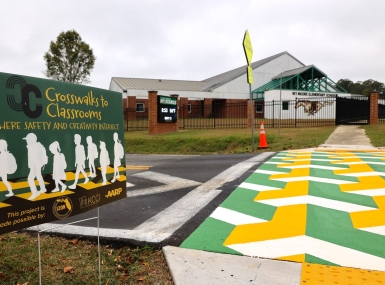Share
Line: | House transportation bill friendlier than Senate’s to county priorities @NACoTweets |
On Nov. 5, the U.S. House of Representatives passed the Surface Transportation Reauthorization and Reform (STRR) Act of 2015 by a vote of 363–64.
The House introduced the STRR Act in October as the current surface transportation law — the Moving Ahead for Progress in the 21st Century Act (MAP-21) — faced another looming deadline. MAP-21 passed Congress in July of 2012 and was originally set to expire Sept. 30, 2014. Rather than allowing MAP-21 to expire, Congress has opted to extend its authorization four times, with the most recent extension set to expire Nov. 20, 2015.
Over the course of those extensions, both the House and Senate have worked to advance a long-term reauthorization bill. However, the biggest challenge has long been how to pay for a multi-year policy and spending framework given the declining solvency of the Highway Trust Fund. Rather than working toward a long-term solution for the trust fund, the reauthorization process has proceeded with a different funding goal: finding enough money to partially or fully fund a five- or six-year bill.
In July, the Senate passed the Developing a Reliable and Innovative Vision for the Economy (DRIVE) Act, which authorized six years of policy and spending, but only provided enough revenue to pay for the first half of the bill. Like the DRIVE Act, the STRR Act is a six-year authorization of federal surface transportation policy and spending authority that addresses several county transportation priorities.
Specifically, the STRR Act recognizes the critical role counties and other local governments play in the nation’s transportation system by increasing the amount of funding available for locally owned infrastructure and putting more federal highway dollars in the hands of local decision-makers. In addition, the bill addresses safety issues on high-risk rural roads and provides funding for public transportation systems of all sizes.
While both the House and Senate bills include a number of the critical priorities NACo has worked to advance over the past two years, the two pieces of legislation take slightly different approaches to addressing the needs and investment of county-owned infrastructure. (Those differences are highlighted in a comprehensive chart provided at www.naco.org/MAP21)
While both bills provide more funding for county-owned highways and bridges when compared to current law, the STRR Act authorizes $800 million more than the DRIVE Act for the key highway program that principally funds county projects.
The STRR Act also makes certain county-owned bridges eligible for an additional $140.2 billion, which more than repairs the 30 percent reduction in available funding that locally owned infrastructure suffered under MAP-21. The DRIVE Act fails to completely repair these funding cuts but is an improvement from current law.
In comparison to the DRIVE Act, the STRR Act sub-allocates $5 billion more in flexible highway funding, putting more money in the hands of local decision-makers and increasing the amount of funding that states have to obligate in rural, mid-sized and urban areas.
Now that the House and Senate have passed their own authorization bills, the two chambers have begun to negotiate a final reauthorization bill through a conference process. Congress must reconcile the differences between these two bills and come to a compromise by Nov. 20, when the current extension of MAP-21 expires.
While the 41 appointed conferees are attempting to complete their work and get a final authorization bill passed by that deadline, it is possible that the congressional calendar and Thanksgiving recess could require another short-term extension of MAP-21.



